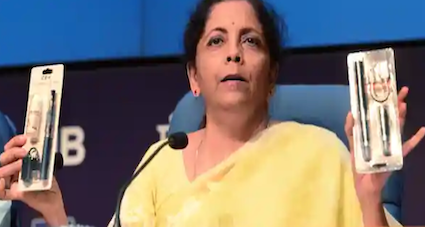A new vaping regulation bill passed by the legislature in the Philippines early this month has made health officials in India sit up and take notice.
The bill is viewed seriously in India, where vaping is banned as per government regulations. But what is interesting is that New Delhi cannot remain in isolation about its health issues and – claim experts – must follow global guidelines.
“The bill is being studied, that’s all I can say,” a senior official of India’s ministry of Health & Family Welfare told this reporter.
So what exactly is this bill?
This legislation makes the Philippines one of very few Asian countries with reasonable vaping regulations. And these regulations are meant to benefit people who smoke or would smoke if vapour products weren’t available.
The Vapourized Nicotine Products Regulation Act was overwhelmingly passed by the Philippines Senate (19-2) and was quickly reconciled with a version passed earlier by the House of Representatives. That does not mean the bill has been free of debate, major lobbying groups both in support and opposition to the law.
After the bill was transmitted to then-President Rodrigo Duterte on June 24, Filipinos political cognoscenti tried its best to persuade Duterte, and then his successor Ferdinand Marcos Jr., to sign or veto the bill. The presidents had 30 days from receiving the bill to sign or veto. No action was taken and the bill “lapsed” into law on July 25, 2022. And in two weeks’ time it will become official.
New Delhi is keenly observing how the Philippines law affects nicotine consumers?
There are more than 16 million Philippines citizens who smoke. Offering them a government-approved, regulated alternative could save millions of lives.
“It is the issue of alternatives which the ministry is studying,” the official further said.
The most important aspect of the law is that it legitimises vaping as a strategy to help smokers reduce or eliminate their health risks. The law gives authority to regulate vaping and heated tobacco products to the Department of Trade and Industry (DTI), which will consult with the Philippines Food and Drug Administration (FDA) to set technical standards for safety and quality. The law includes all consumer vaping products, including those that don’t contain nicotine.
These are the very arguments which vaping companies have been making in their representation to the Indian government without any positive.
On paper, the law allows online sales and products with nicotine strengths up to 65 mg/ml (6.5 percent). It lowers the legal age of purchase from 21 to 18, which means there will be more young people vaping instead of smoking. And let’s remember 18 is the age to buy loose cigarettes.
What is interesting is that the new vape law imposes restrictions on where vaping products can be sold, and provides penalties for stores and online retailers that sell to minors. It also restricts advertising, including use of social media influencers and celebrities.
This is exactly what global experts are saying when it comes to the e-cigarette business across the world, their agenda is laced with well-drawn, thought-provoking ideas.
New Delhi agrees there has been countless conversations about known harms from smoking and combustible products that have aligned public health and tobacco control communities to a common goal.
The overall idea is to end the smoking epidemic.
Now the emergence of e-cigarettes and novel nicotine products has created an often-binary debate of youth versus adults, industry versus public health and absolute versus relative safety.
But everything still remains stuck into a limbo.
The year 2022 is expected to be a crucial one. Nations which have banned vaping slowly, yet steadily, will now make changes. Like the Philippines did. In the US, a new Food and Drug Administration (FDA) commissioner is in place. All eyes will be on the FDA. And then, the need for the implementation of a comprehensive regulatory framework that will unify these competing visions by protecting kids and helping adults.
Health officials admit it has never been more urgent. The million-dollar question is: Can it be achieved?
Everyone – including India – agrees there should be a more pragmatic approach to reducing tobacco prevalence. The idea is to explore alternative tobacco products, including heated tobacco products and e-cigarettes. It’s to lessen the harm caused by addictive behaviour towards individuals, communities and societies.
It is a part of a big concept; Indian health ministry officials must realize. They are not budging, but reading up on what is happening across the world.
(Shantanu Guha Ray, a Wharton-trained journalist, is the Asia Editor of Central European News & Zenger News and an award-winning author. He won the 2018 Crossword award for his book, Target, which probed the NSEL payment crisis.)


